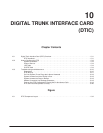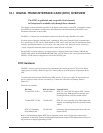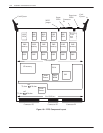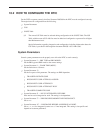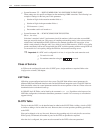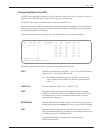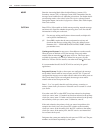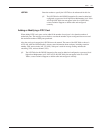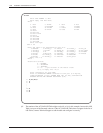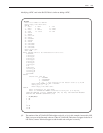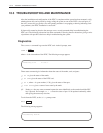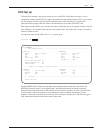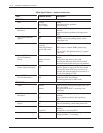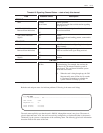
10-6
Installation and Maintenance
V
olume
Octel Overture 200/300 Serenade 3.0
PB60014–01
Enter
the Answering Mode. Must be either Primary Answer (AX),
Secondary Answer (CX), or Message Center (MX). Determines how the
message server handles the call when that port answers. For further details
on answering modes, refer to the
Pr
oduct Description
volume, General
Description chapter, and to the
Configuration
volume, Slots T
able chapter
,
Line Cards section.
Enter YES or NO to enable or disable message waiting, network message,
and alarm calls. Specifies whether the port may place a call. Provide this
information for each port on the card.
.
For message waiting notification or alarm outcalls, multiple calls
can be placed simultaneously
.
.
Some PBXs require that the same port/extension activate and
deactivate the message waiting lamp. T
o do this, define System
Parameter 106 — LAMP MESSAGE W
AITING POR
T
, with the
port number to use.
Nonintegrated Systems.
In most cases, allow
all
ports to make outcalls.
When all ports are defined as YES, the message server only makes
outcalls when no more than
of the ports are in use. This leaves ports
available for incoming calls. If NO is defined for any ports, all ports
defined as YES are used for outcalls, even when more than
are in use.
It is recommended that NO for OUTCALL be used only for special
applications.
Integrated Systems.
If eight or fewer ports are configured, the message
server makes outcalls when at least two ports are idle. If 9–32 ports are
configured, the message server makes outcalls when at least three ports are
idle. If more than 32 ports are configured, the message server makes
outcalls when at least four ports are idle.
Enter 1, 2, or 3 to specify that this card is the primary
, secondary
, or
tertiary system clock sync source or N that the card is not used as a clock
sync source.
If no other cards (PIC or other DTIC) have been selected as the primary
clock sync source, enter 1. If another card has been selected as the primary
clock sync source, enter 2. If other cards have been selected as the primary
and secondary clock sync source, enter 3. Otherwise, enter N.
If the card selected as the primary clock sync source has problems (for
example, the clock is lost), the system CPU switches to the secondary
clock sync source. If the secondary fails, the CPU switches to the tertiary
clock sync source. If the tertiary fails, the CPU uses its own internal but
less accurate clock crystal.
Designates the system port number for each port on a DTIC card. The port
numbers are allocated sequentially by the system.
MODE
OUTCALL
SYNC
SYS




